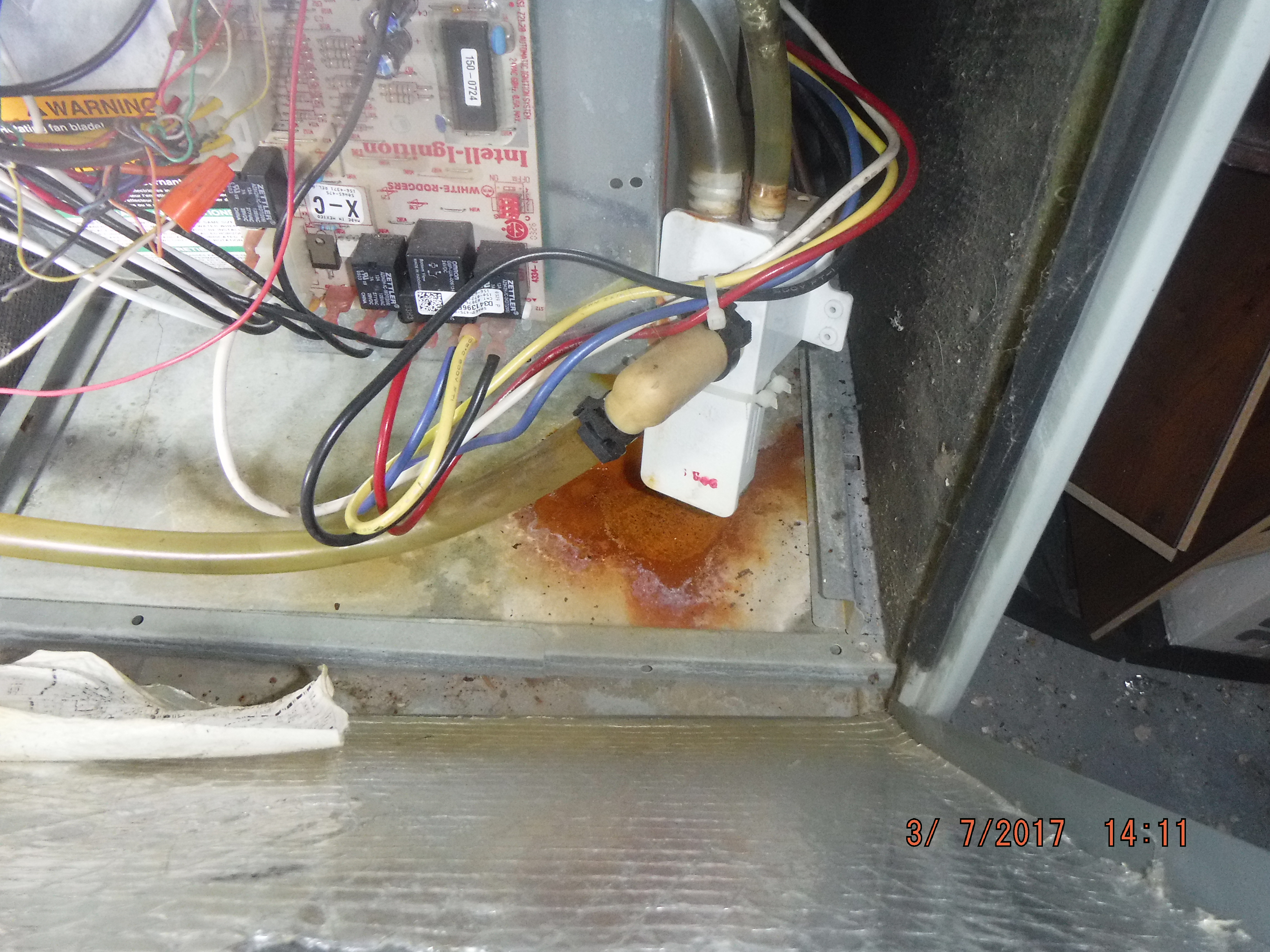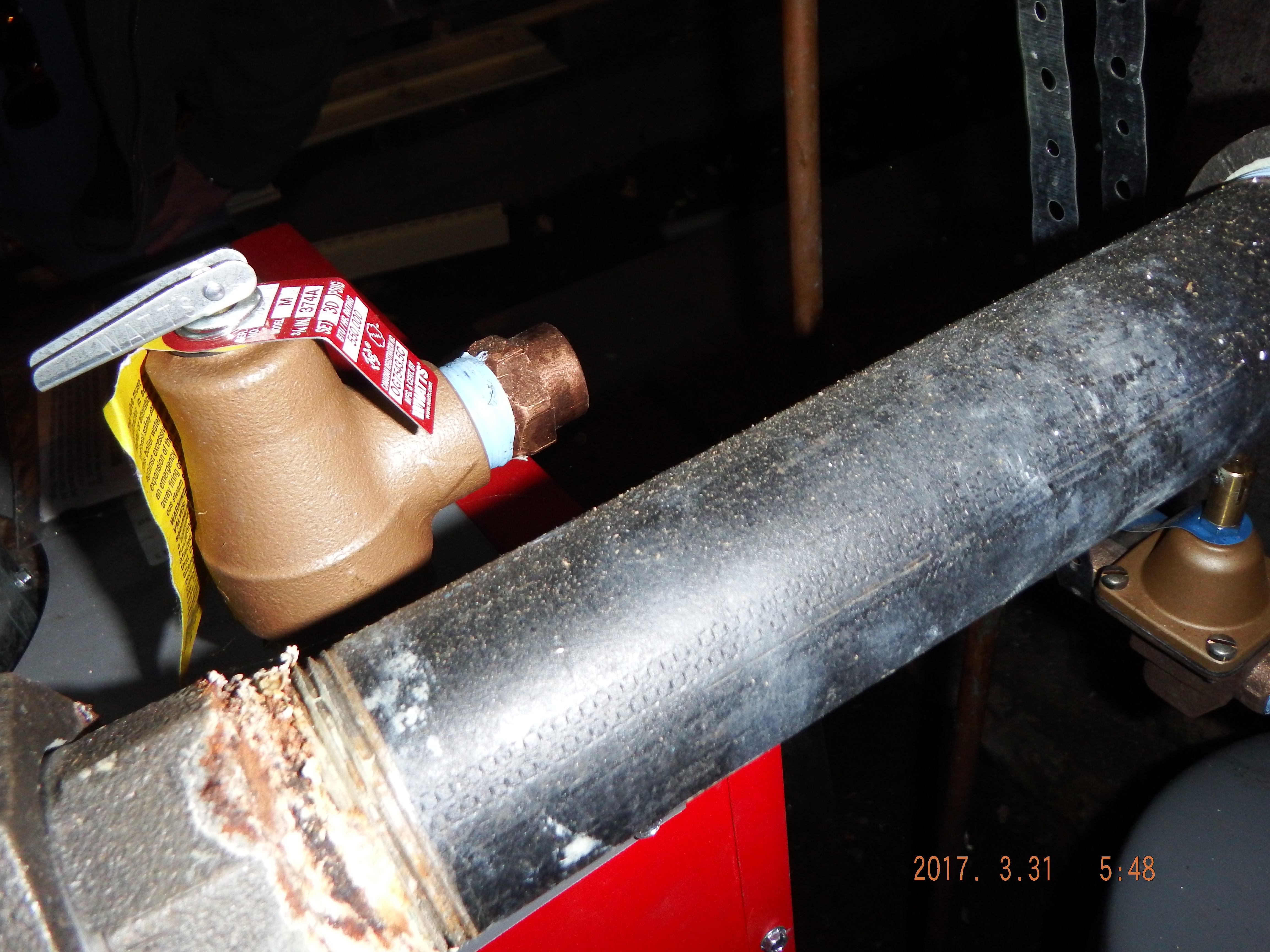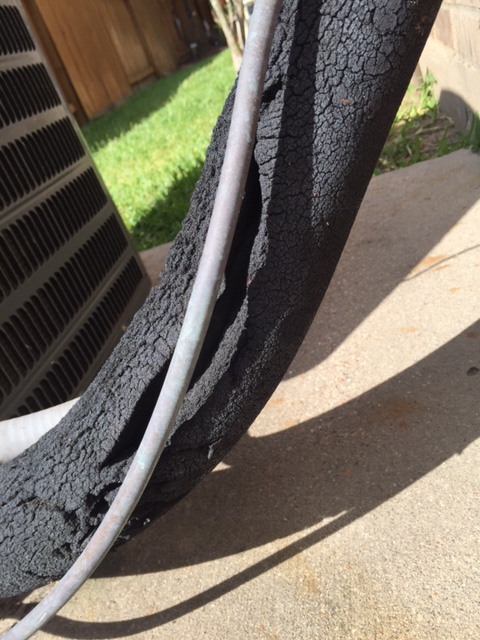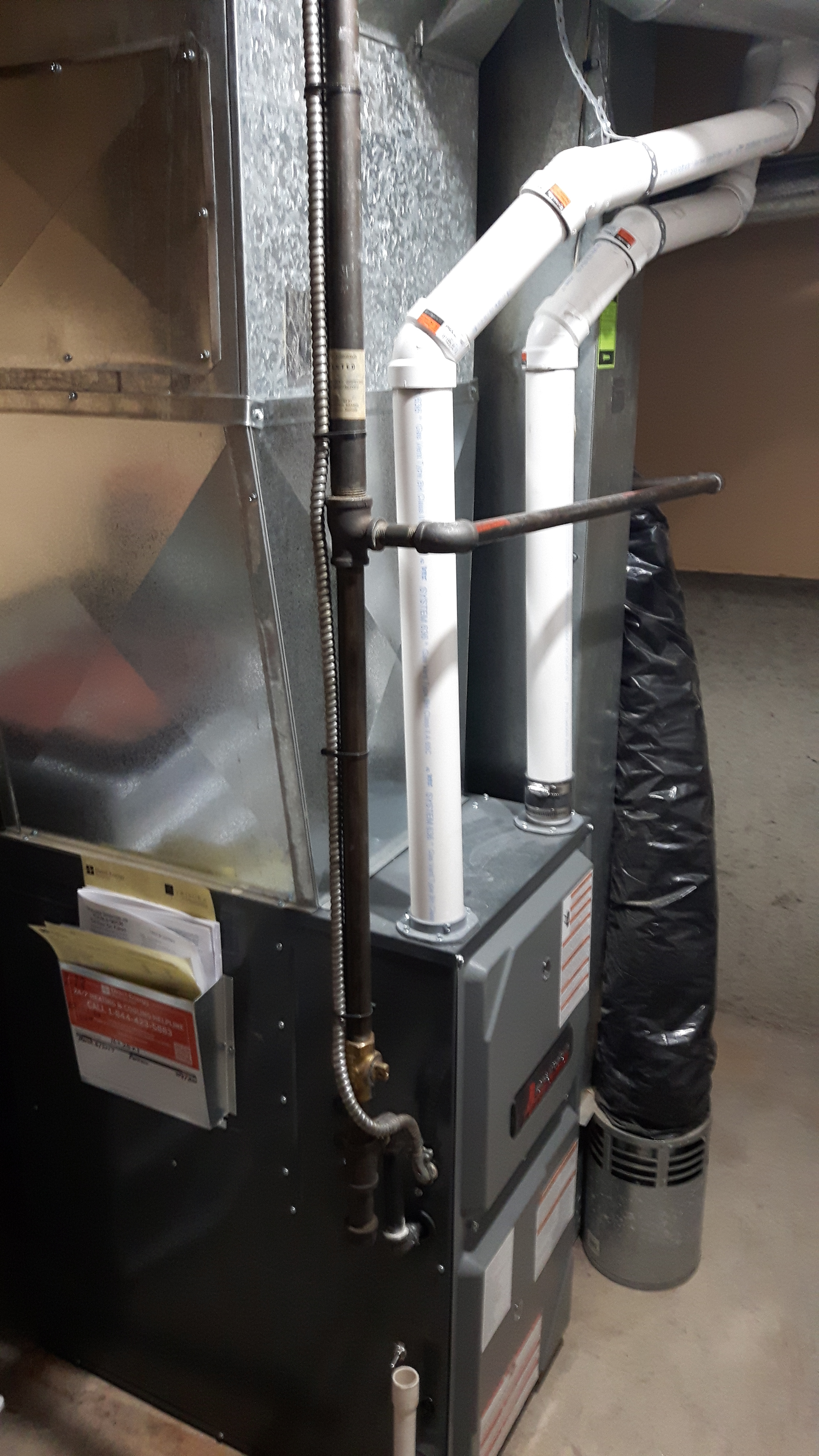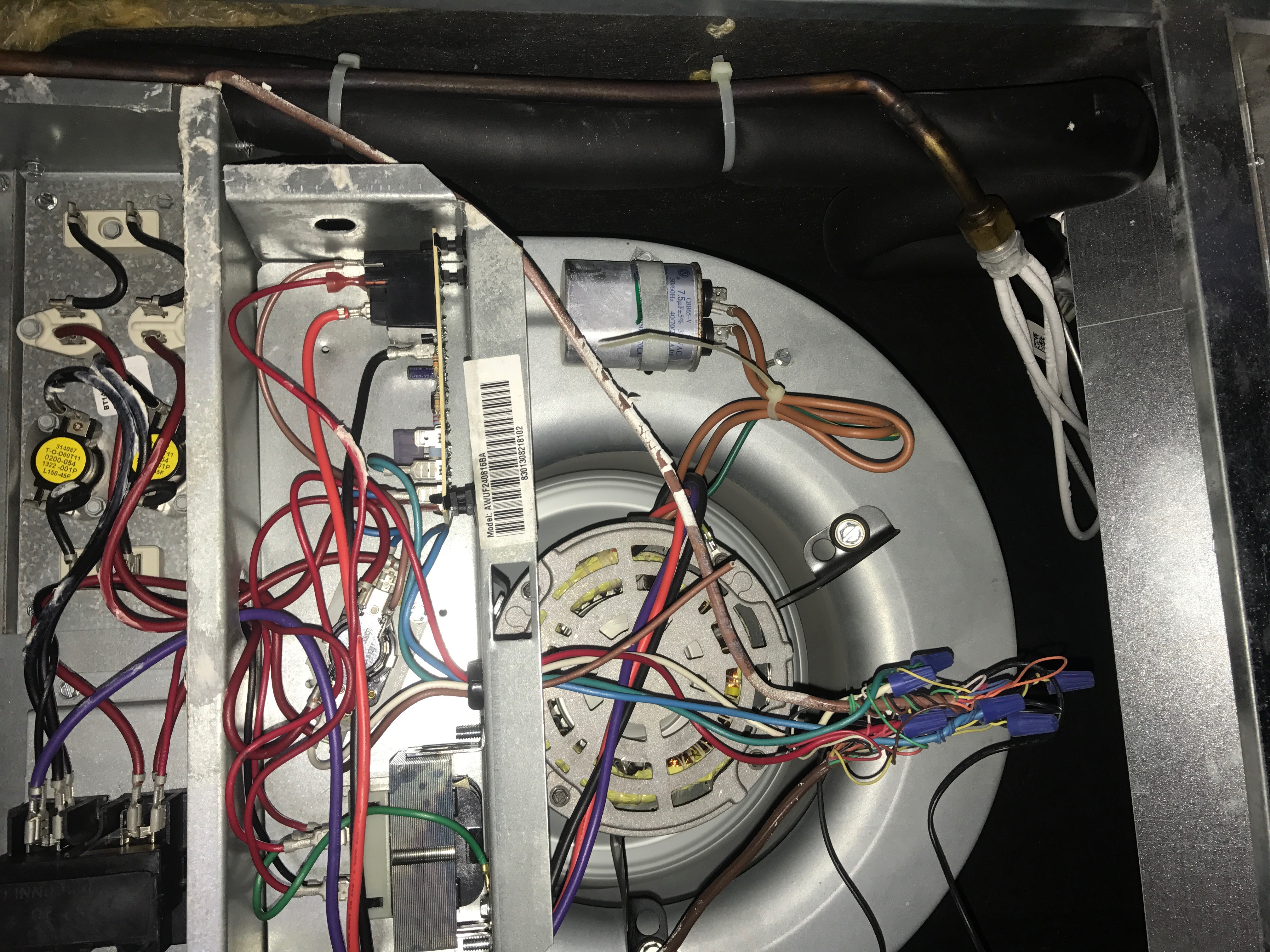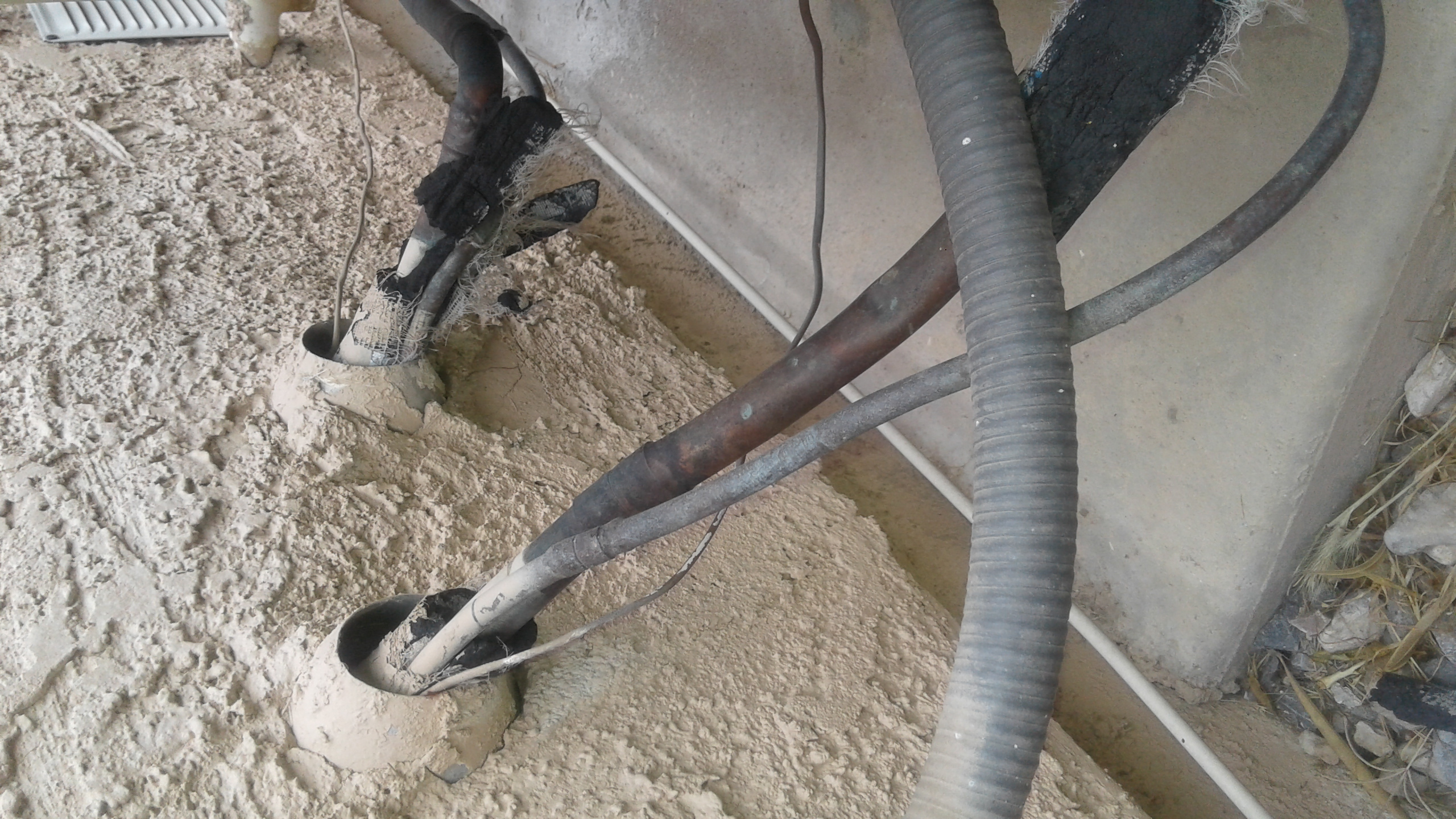What is this white material on my ducts? Well, the answer depends on where you are finding this suspect material. If you are looking on the exterior of the ducts and it covers the surface area of the duct, it is possible that you are looking at an asbestos type material. As always whenever you think you may have abestos in your home, be safe and have it tested by a qualified professional. If what you are finding is below an opening, crack, or hole in the duct, it is likely to be a result of condensate. When the condensate dries, it leave a white powdery substance behind.
The three cycles of a heat pump are heating, cooling and defrosting. A heat pump will operate in the defrost cycle until the outdoor coil temperature reaches around 57 F. Some heat pumps use thermometers to detect the temperature of the outdoor coil, while others are on a timer.
The burner for this particular furnace shows evidence of corrosion. Upon further investigation, the concentric vent on the exterior of the home was disconnected. This disconnected vent showed evidence of back-drafting.These conditions should be furhter evaluated by a qualified licensed heating technician.
TPR valve noted as not having an extension tube. This is a serious safety concern. If the valve were to open due to upset conditions in the furnace, the valve could open and expel extremely hot water and/or steam and could cause severe scalding to a person or pet. The extension tube should extend
to at least 6 inches from the floor. Recommend repair by a licensed HVAC technician.
This is a chimney cap that is rusted and damaged and needs to be replaced. It is rusted away and birds and vermin can easily crawl right in there and cause damage. Inn my report I would only put this “Chimney needs new cap, rusted and damaged.”

Bat Infestation:
I find it interesting that 20% of the know mammal species are bats and they are not blind. Even though they look like rodents or flying rats they are not. I didn’t know that a war was started over bat guano. Also clearing out a bat house in the summer is inhuman because the babies need there parents to feed them and they won’t be able to fly until later in the year.
Good read and interesting!
counter flashing around the exterior of brick chimneys should be installed at least one inch into the mortar joint of the brick chimney. The counter flashing should also over lap the step flashing. Aprin flashing should also be used at the lower part of the chimney. The counter flashing should also be sealed with an appropriate sealant where the counter flashing enters the mortar joints.
This picture shows bad insulation on the suction line of the air conditioner’s outside condenser unit. This insulation should be replaced so as to keep the entire suction line (inside and outside) properly insulated to avoid condensation buildup and spillage into the home.
This picture shows bad insulation on the suction line of the air conditioner’s outside condenser unit. This insulation should be replaced so as to keep the entire suction line (inside and outside) properly insulated to avoid condensation buildup and spillage into the home.
This is a picture of an up flow, electric heat split HVAC system. the unit was manufactured in 2015.The system is a 2 1/2 ton unit with an exterior condenser. the electrical breakers for this are sized correctly and the system is operational at this time.
The home was built in the early 1920’s, and the furnace currently installed is hard to date, and due to the small, confined space of the utility room, is hard to inspect fully. However, under normal operation of thermostat controls, it appears to be working fine, but as it is pre forced-air, it is likely only 65% efficient. also of note, the flue is being ducted through the original brick chimney, and further inspection by a qualified furnace installer is recommended to determine air quality and if any harmful gases are potentially in the home.

I picked an image on a high-efficiency or condensing style furnace which cycles warmed, combusted exhaust gases through a second heat exchanger and removes steam or water vapor and takes the heat from that water which would normally be exhausted outdoors by low and mid-efficiency furnaces.
Carbon Monoxide Poisoning and Detectors;
Just finished reading this article and found the numbers a bit disturbing. 9 out of 10 reported non fire co incidents take place in the average family home.most occur in the winter months due to running the heat. CO poisoning can kill over a slow amount of time or can kill in as little s five minutes. You should install CO2 detectors in every bedroom or in the hall outside the doors so when it goes off it will wake all the inhabitants and give them time tom get out of the home.
Alternate Heating and Cooling Systems
Heat pumps for use in a residential housel. There are 3 available technologies that can accomplish heating or cooling, air-source heat pumps, ground-source heat pumps and water-source heat pumps.
Most heat pumps are split-system heat pumps, the condenser unit (c/w compressor) located outside and the evaporator coil (c/w expansion device) located inside.
Air-source heat pump uses the outdoor air as a heat source (often called an air-to-air heat pumps). This system uses the outdoor air as the source from which to absorb heat energy and transfers it to the interior air of the residence. The down side of this system is cold weather below 30 F for extended periods of time.
A ground-source heat pump also called a geothermal heat pump. A heat-transfer fluid is pushed through underground high-strength plastic pipes and operates the same as the Air source heat pump.
A water-source heat pump uses water as the heat source (or heat sink). Water is the heat-transfer medium. The constant temperature of the water source is used instead of the variable air temperature. The compressor and controls of a water-source heat pump are identical to those in a ground-source heat pump.
These systems doesnt use fossil fuel but uses electricity which can be non-polluting solar.
This photo is a new installation of a high efficient furnace. The original furnace was a low efficient furnace manufactured around 1981 and had a standing pilot. Other than not being efficient that furnace still preformed satisfactory with no issues. This installation has two cold air installed one can be seen at the floor near the cold air return duct while the other is mounted into the cold air return duct. PVC gas rated pipe draws outside air into the combustion chamber and exhaust flue gases out the other.
In the photo is a blower fan and the electrical components from electric furnace in my home. While watching the video I removed the blower door from the to get more of a hands on feel. I operated the system with the blower door open and was able to see the blower fan in action.
I read article “Inspecting the HVAC System for Duct Leaks and Energy Loss.” Upon reading the article it reinforced the importance of making sure the HVAC and ductwork are sealed regardless of whether the air handler was in a conditioned space or not.
Here is a picture of an air handler that i inspected. You can see that the air handler is very dirty. The reason is that the filter that is installed is installed in a position that does not filter the incoming air at all. Almost all of the air that enters this unit is not filtered at all. the coils are clogged and the unit is beginning to frost over.

I read an article on bamboo as a construction material. While bamboo has a lot of advantages to use which include high strength along it’s vertical axis, inexpensive, its a very sustainable resource and is very light. It does have some major drawbacks as well. It does not support weight very well at all along its horizontal axis. It also can cause concrete to crack and it can have some inspect issues if not treated properly.
Vacuum and liquid lines from central air conditioning unit outside of house. No restrictions, ample airflow, but vacuum line is missing insulation and is cracking in some parts. This is allowing what could potentially lead to water intrusion and should have further evaluation performed by licensed qualified HVAC professional.
